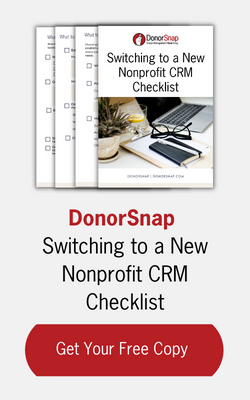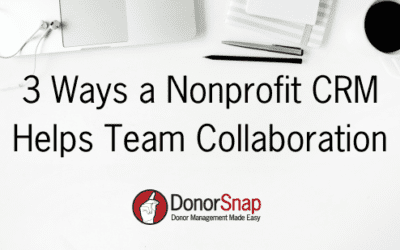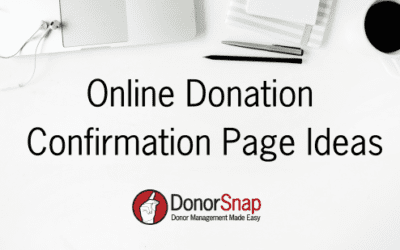Every year nonprofits celebrate successful giving campaigns. Unfortunately, some years nonprofits might not hit their goal. While it is easy to celebrate the success of a campaign, it can be more of a challenge to decide how to handle a shortfall.
Several factors lead to unsuccessful campaigns. Some are out of a nonprofit’s control and others are possible to pinpoint and prevent in the future. However, any amount raised for your organization should be celebrated and your nonprofit can turn a shortfall into a win.
In this blog post, we will cover how nonprofits should handle not meeting a fundraising goal and how they can communicate the results of the campaign with their supporters.
Should nonprofits tell their supporters when they don’t hit a fundraising goal?
This is a hot topic for debate, but most fundraising professionals agree that it is okay to tell your supporters. It is just important to frame it in a positive light. Being transparent is key to building trust with your audience, so you would never want to hide the results of a campaign. However, sharing that you didn’t hit the goal may leave supporters feeling lackluster about their donation. Take time to look through your campaign and pull out some wins. For example, if you didn’t hit your 10k goal, but you were able to make it to 6k, frame it in a way such as “You helped us get more than halfway to our goal!” Another example of a win to celebrate could be how many new donors contributed to the campaign. If you brought in 20 new supporters, highlight that metric. Anything that can spin the bad news with some good news will help you communicate effectively.
How can nonprofits close the gap when they don’t hit a fundraising goal?
There are several steps a nonprofit can take after not hitting a goal to help close the gap. Nonprofits should carefully evaluate their fundraising data to look for areas of improvement or gaps in communication. When it comes time to make another ask, nonprofits should consider the following options:
Option 1: Find a Matching Donor and Make Another Appeal
One option is to look through your major donor pool and see if you can make a strategic ask for a match. This can help fuel the re-solicitation by adding a sense of urgency. Consider looking for donors who have shown interest in similar campaigns in the past. Also, ensure they have not recently given to another campaign without being properly thanked. If you are a newer nonprofit or don’t have a pool of major donors, consider looking at corporate sponsorships.
Option 2: Reach out to Lapsed Donors
If you’ve run a similar campaign in the past, such as a Giving Tuesday initiative, reconnect with lapsed donors. Craft a personalized ask that acknowledges their past support and emphasizes the impact achieved. If a matching donor is secured, highlight this in communications to add a sense of urgency. For instance, convey a message like, “We missed you this year, but it’s not too late to contribute to our campaign. If you give in the next 48 hours, we’ve secured a matching gift of up [match amount].”
Option 3: Resolicit Donors of the Campaign
It can be a touchy subject to reach back out to donors who have contributed to your campaign. You don’t ever want to come off ungrateful and you should always thank them for their support. However, it is possible to do this with tact. One thing to consider is this audience is warm, they already cared enough about your campaign to give once. Explore options such as inviting them to become monthly donors, suggesting an increase in their gift amount, or asking if they can share the campaign with a friend. Take time to thoughtfully consider the audience and tailor a personalized message to each segment.
How should a nonprofit handle a shortfall when raising restricted funds for a big-ticket item?
If your nonprofit was running a capital campaign with restricted donations, handling the shortfall is going to be a bit more complicated. There are some steps and considerations you should take.
Review Agreement and Discuss Options with Donors
The first step is to review the restricted funds agreement. Were the funds truly restricted? Funds are truly only restricted as the result of a donor giving specific instructions as to what the money may be used for. Decide what a good course of action would be within the parameters of the initial agreement of the donation. From here, reach out to your donors who contributed to the restricted funds. Discuss potential options, such as financing to close the gap or saving them for a future campaign. Seek their input and make them part of the decision-making process.
Consider if Reallocation is Possible
Restricted funds can be tricky and your nonprofit may not always be able to reallocate the funds. If the project is time-sensitive or the need is urgent, consider a closely related initiative that might be possible. Ensure that the new purpose aligns with the donors’ original intent as much as possible. The key is communicating thoughtfully with their donors. You should always consider this before starting a restricted fund campaign. It is helpful to not word your campaigns in a way and avoid truly restricting funds.
Saving for Future Campaigns
If reallocating funds isn’t feasible or doesn’t align with your organization’s values, consider saving the funds for a future campaign. Communicate the decision to your donors, assuring them that their contributions will still be used for a cause they believe in. Make sure you stay in communication with them giving them updates often as to the status of the funds and progress of the campaign.
Final Thoughts
Mindset is key when approaching a shortfall on a fundraising goal. Any amount raised is cause for celebration and nonprofits should not be afraid to communicate this with their audience. It is important to remain transparent with your supporters while also highlighting good news to soften the bad news. When it comes time to fill the gap on the campaign shortfall, nonprofits should consider securing a matching donor, creating a lapsed donor campaign, and tactfully re-solicit the campaign’s initial donors. Nonprofits should carefully consider restricted funds, and make sure they are compliant with handling a shortfall in that respect. With any of these shortfalls, maintaining constant communication with donors and keeping them engaged is key to securing their ongoing support.




